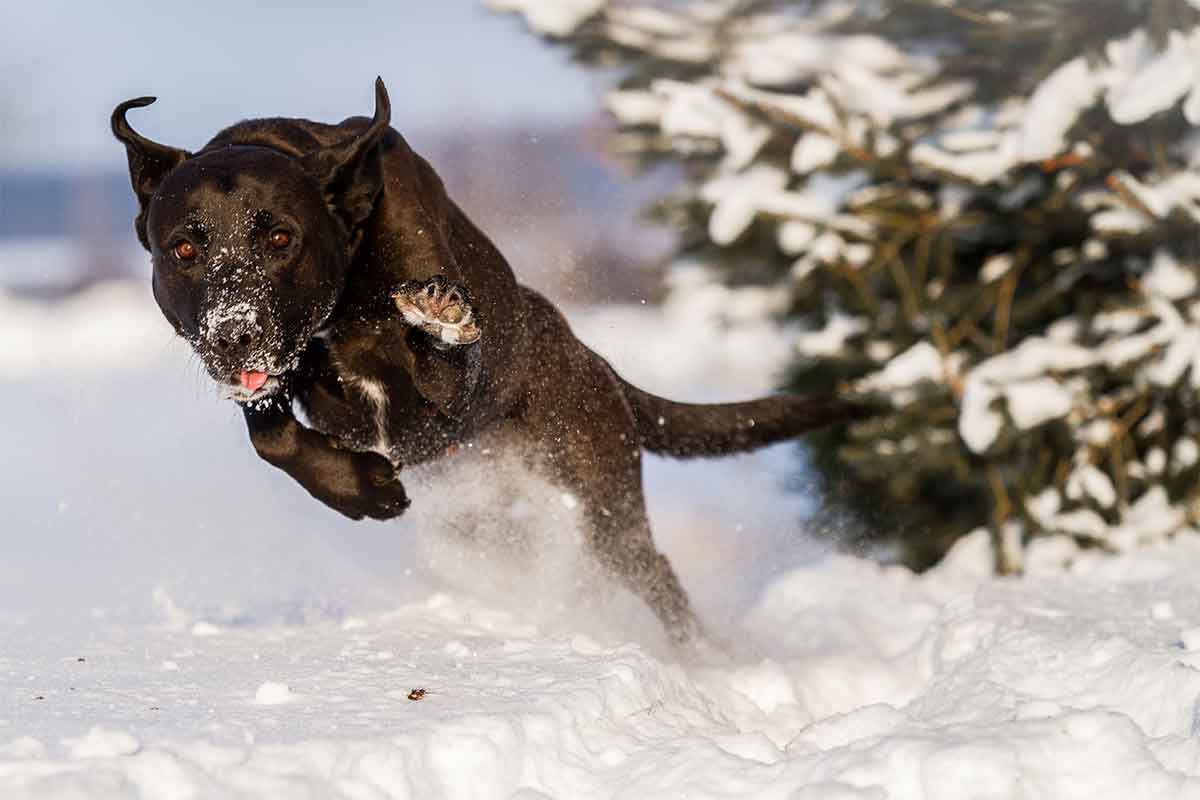To some dogs, and most people, the weather outside is frightful. Other dogs delight in romping and playing on snow and ice. Alaskan Malamutes, Siberian Huskies and other heavily furred dogs, not to mention their feline counterparts such as Maine Coons and Norwegian Forest Cats, were built for snow and cold. But Toy Poodles and Sphynx cats in Michigan would hop a plane to Hawaii if they could, and Greyhounds and other sighthounds living in New York City would winter in Florida, given a choice.
Winter-averse pets shiver and shake, hunching up in an attempt to stay warm. It’s clear they’re not having a good time as they slip-slide away on slick ice or go belly deep into the snow.
Whether your dog or cat hates winter or loves it, you can take steps to keep him warm and safe. Here’s how to protect pets who would rather move south as well as those who would be happy to spend all day diving into snow drifts.
Put A Coat On Him
If a dog weighs less than 20 pounds and the mercury dips below freezing, a warm coat with a lining will help him retain body heat. Lean breeds such as sighthounds have only seven or eight percent body fat, substantially less than most other dogs, so they also require protection from the elements, especially when the temperature falls below 40 degrees Fahrenheit or is 45 or 50 degrees and damp outside.
Age and general health matter. Elderly dogs or dogs in poor health, no matter their size, benefit from wearing a coat when it’s cold outside. The same is true of any dog with a lean body or little fur for protection. Think Dalmatian, Vizsla, Weimaraner, and many mixed breeds, including pit bull-type dogs.
You may think, “Back in the day, great-grandpa’s dog managed in a dog house that wasn’t even heated.”
Yes, the dog managed, but did the dog suffer? None of us want that.
Dogs and cats who spend long periods outdoors in cold weather, especially if they aren’t acclimated to it, can suffer frostbite. Most vulnerable are their extremities–tips of tails and ears. If your dog doesn’t wear earmuffs or a “tail glove” (and most don’t), it’s your job to make sure he doesn’t stay out too long. Protective gear and products can help.
These Boots Are Made For Walking
The combination of ice and cold and snow, especially with street salt added to the mix, will sting dog paws. Painful ice balls can form between paw pads.
Here are three ways to protect your dog’s paws:
- Booties: Sled dogs wear booties, and so do working search and rescue or detection dogs going over rough terrain. If booties are good enough for them, they’re good enough for your dog. Hint: booties with Velcro stay on better.
- No booties? Applying products such as Musher’s Secret (available online and at many pet stores) or spraying paws with unflavored no-stick cooking spray (such as Pam) prevents snow and ice from sticking to paw pads.
- Pet-friendly deicers: Many pets get upset tummies after licking road salt off their paws, and street salt that is typically used can damage paws. A pet-friendly option is not only better for dogs and cats, but also for the environment and for your concrete.
Chill Cat
For cats, there are always dangers to being outdoors, particularly when temperatures take a nose dive. The good news is that cats are pretty resourceful at finding warmth. That’s also the bad news. To a cat seeking heat, a warm car hood is comparable to a cozy electric blanket. Too often, veterinarians in cold-weather climates treat cats who are seriously mangled (some don’t survive) when people start their engines. Follow singer Tony Orlando’s advice: knock three times on the car hood before turning on the ignition.
Desperate for water that isn’t frozen, outdoor cats may drink anything they can find, including tempting but toxic antifreeze. Less than a quarter cup of antifreeze can kill a Great Dane, and a teaspoon’s worth can end the life of a small dog or a cat. Antifreeze products marketed as pet-friendly contain bittering agents that make the liquid taste awful so pets are less likely to sample it, but they are still toxic if ingested.
A common concern, particularly as temperatures hover from just below freezing up to the 30s, is ice-covered ponds, rivers and lakes, not to mention retention ponds in condominium complexes. The ice may not be as solid as it looks. Every year some dogs fall through thin ice, and people die attempting to rescue them.
The bottom line?
We love our pets as family, so let’s keep them safe and comfortable in winter weather.
This article was reviewed/edited by board-certified veterinary behaviorist, Dr. Kenneth Martin and/or veterinary technician specialist in behavior, Debbie Martin, LVT








